簽到天數: 3291 天 [LV.Master]伴壇終老
|
 t02436|2017-9-23 18:39
|
顯示全部樓層
t02436|2017-9-23 18:39
|
顯示全部樓層
仍是個C3,開始轉北進行,大概就複製Jose的路徑沿著西經72度附近北上。
000
WTNT45 KNHC 230853
TCDAT5
Hurricane Maria Discussion Number 29
NWS National Hurricane Center Miami FL AL152017
500 AM EDT Sat Sep 23 2017
Maria is sending mixed signals regarding its intensity this
morning. One one side, the 35 n mi wide eye has become better
defined in satellite imagery, and the last report from an Air Force
Reserve Hurricane Hunter aircraft indicated that the central
pressure had fallen to 952 mb. On the other side, the
aircraft-reported winds decreased a little since the previous
advisory, with maximum 700-mb flight-level winds of 110 kt and
maximum surface wind estimates from the Stepped Frequency Microwave
Radiometer near 100 kt. Based on the aircraft winds, the initial
intensity is lowered to 105 kt. Various analyses show that Maria is
experiencing about 15 kt of southwesterly shear, which is likely the
reason for an asymmetric distribution of convection in the eyewall
at this time.
The hurricane is likely to stay over warm water in an environment
of light to moderate shear for the next 36-48 h. The intensity
forecast during this time will show some fluctuations in strength,
with the forecast lying near the upper edge of the intensity
guidance. After 48 h, the forecast track takes Maria over the cold
sea surface temperatures left behind by former hurricane Jose,
which are below 26C in some areas. This should cause a pronounced
weakening, and the new forecast is similar to the old forecast
in showing such a trend during this time.
The initial motion remains 345/8. Maria is currently being steered
by a subtropical ridge to the east of the hurricane and a mid- to
upper-level trough over the southeastern United States. This
combination should cause a north-northwestward to northward motion
for the next couple of days. After that, the ridge is forecast to
amplify toward the northwest due to the influence of a mid- to
upper-level ridge in the westerlies moving through the northeastern
United States. The track guidance has responded to this evolution
by shifting westward since the last advisory, with several of the
global models now calling for Maria to come close enough to the
U. S. east coast to cause direct impacts before the system recurves
into the westerlies around 120 h. The latter part of the forecast
track is also shifted to the west, but it lies to the east of the
consensus models and the center of the guidance envelope. If the
current model trends continue, additional westward adjustments to
the track forecast will be necessary later today.
KEY MESSAGES:
1. Swells from Maria are expected to increase along the coast of
the southeastern United States and will likely cause dangerous surf
and life-threatening rip currents for the next several days.
3. Maria will likely move between the east coast of the United
States and Bermuda by the middle of next week. While the forecast
track has moved closer to the U. S. east coast, it is still too soon
to determine what, if any, direct impacts there might be in these
areas.
4. For more information on the flooding and rip current hazards in
the United States, please monitor information from your local
National Weather Service forecast office at www.weather.gov.
FORECAST POSITIONS AND MAX WINDS
INIT 23/0900Z 24.8N 72.0W 105 KT 120 MPH
12H 23/1800Z 26.0N 72.4W 110 KT 125 MPH
24H 24/0600Z 27.7N 72.7W 110 KT 125 MPH
36H 24/1800Z 29.2N 72.9W 105 KT 120 MPH
48H 25/0600Z 30.3N 73.0W 100 KT 115 MPH
72H 26/0600Z 32.0N 73.0W 85 KT 100 MPH
96H 27/0600Z 34.0N 73.0W 70 KT 80 MPH
120H 28/0600Z 36.0N 71.5W 65 KT 75 MPH
$$
Forecaster Beven
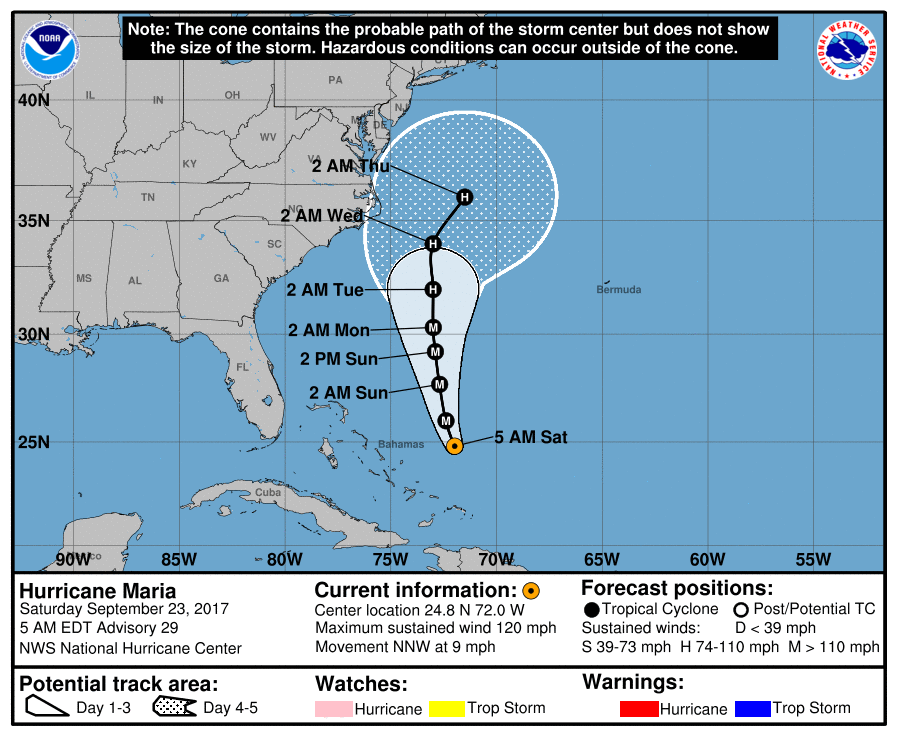
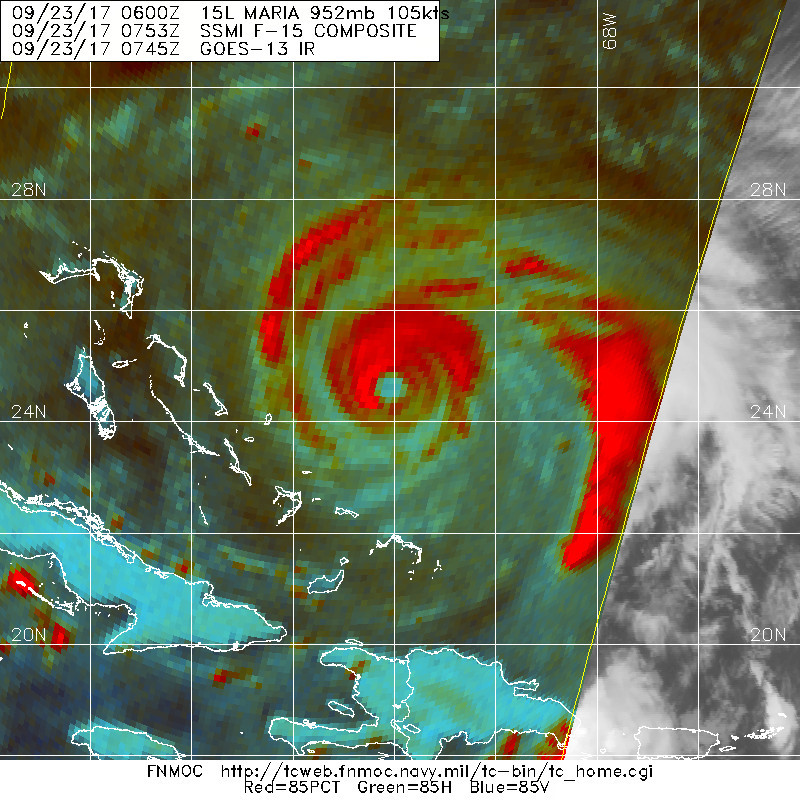
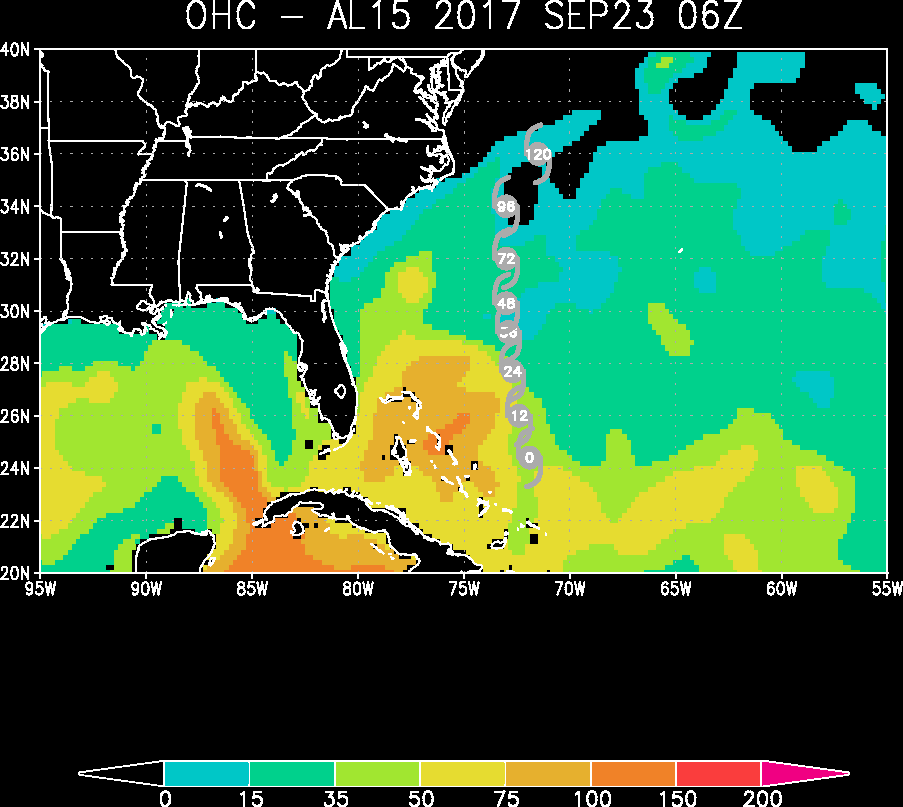
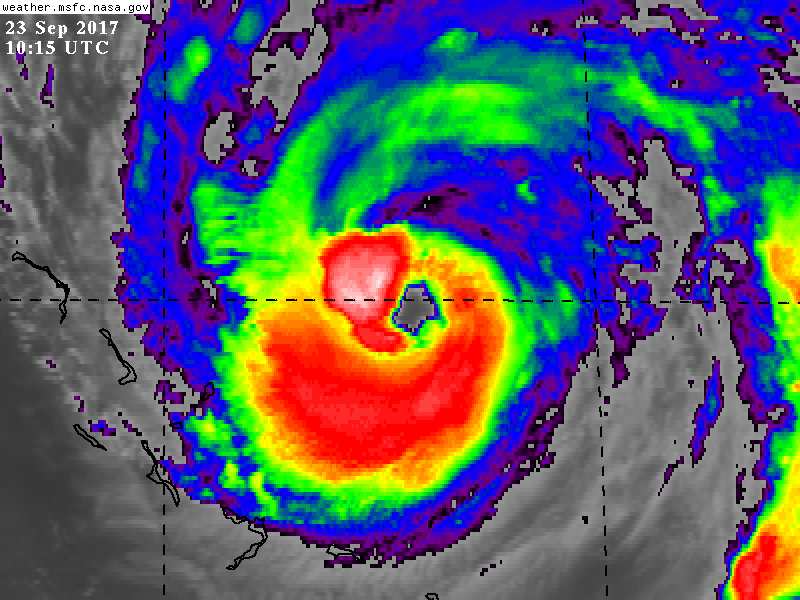
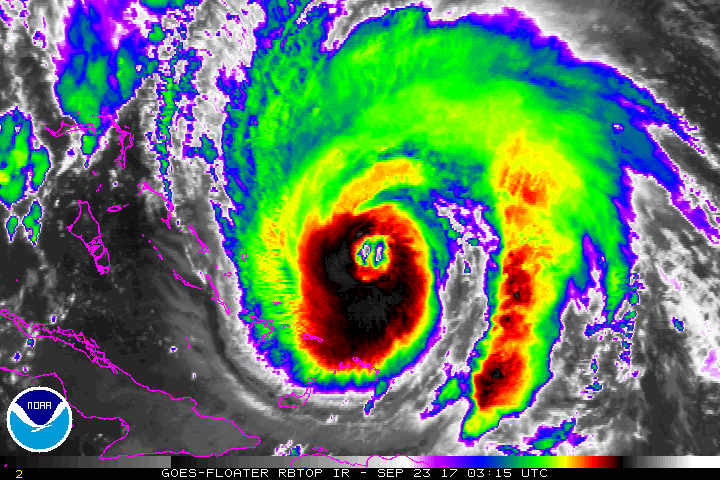
|
|